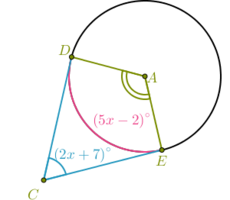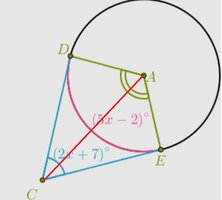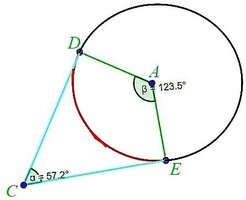"Erin and Antonio were shown the following diagram. They were asked to solve for the measure of angle A in degrees.
Erin says the first step is to set 2x+7 equal to 5x-2.
Antonio says the first step is to set 2x+7 plus 5x-2 equal to 180.
Choose either Erin's or Antonio's statement and explain why it is correct or incorrect. If the statement is correct, explain how you know it's correct. If the statement is incorrect, explain why it's wrong.
If you were to solve this problem, which steps would you take? Include any theorems, definitions, or reasons that explain the steps. Make sure you include all steps needed to solve for angle A."
Attachments
Last edited by a moderator:



